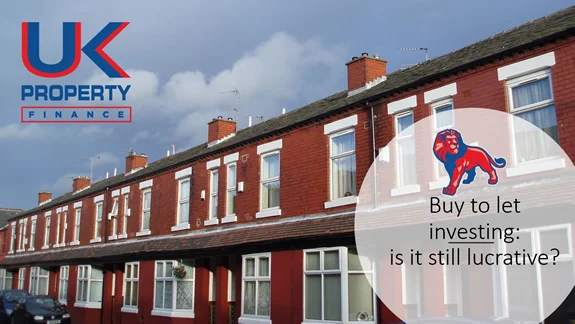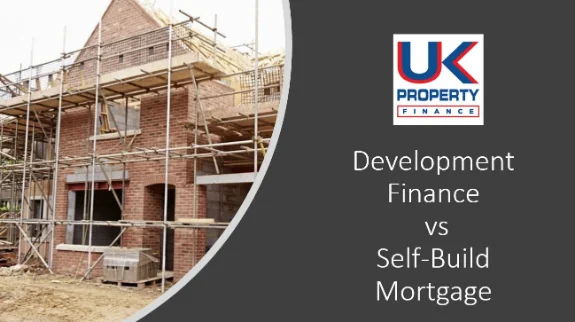Help To Buy vs Right To Buy
Through experience, we’ve found that a lot of would-be homeowners in the UK confuse the government’s Right to Buy scheme with severable separate affordable homeownership programmes.
‘Help to Buy’ in particular is often mistaken for the same basic scheme as ‘Right to Buy’, though there are significant differences between the two.
Help to buy
Introduced in 2013, the government’s Help to Buy programme was created to help struggling buyers purchase properties without the need to provide an excessive down payment. Whereas banks and major lenders typically request deposits of between 10% and 20%, Help to Buy reduces initial deposit requirements to just 5%.
The property being purchased must have a market value of less than £600,000 and be the intended primary residence of the buyer, should the purchase go ahead.
Qualifying applicants are required to offer a deposit of 5%, after which the government provides an equity loan up to a maximum of 20% (or 40% in London) of the market value of the property. This boosts the down payment the buyer is able to provide, opening the door to more competitive mortgage rates and lower borrowing costs with leading lenders.
Contrary to popular belief, these equity loans are available to first-time buyers and existing homeowners looking to relocate. However, the scheme covers new-build properties only, not resale homes of any kind.
The government-issued equity loan is provided for an initial five-year period at 0% interest, after which an interest rate of 1.75% is payable during the six-year period, increasing by 1% every year after the loan balance remains unpaid.
The Help to Buy scheme is therefore designed to improve accessibility and initial affordability for homebuyers, though it doesn’t offer any direct incentives regarding the price of the property. The market value of the property is the price payable, and the equity loan provided by the government must be repaid in full.
Right to buy
By contrast, the government’s ‘Right to Buy’ scheme opens the door to potentially huge discounts for qualifying tenants. In this instance, the scheme is available exclusively for tenants of council properties who must have lived in a council home for a minimum of three years (previously five years).
Tenants who qualify under the Right to Buy scheme may be offered as much as 70% off the market value of their property. The maximum discounts currently available are set at £70,600 across most of England and £104,900 in London. The size of the discount depends on several factors, including the value of the property, the type of property they live in, and how long the tenant has lived there.
While the Right to Buy scheme doesn’t offer any direct assistance regarding mortgage eligibility, qualifying applicants can use the discounts offered instead of down payments. This means that while it is still necessary to apply for a mortgage via the usual channels, it may not be necessary to come up with any deposit whatsoever.
The government recently announced plans to extend the right to buy to tenants of housing association properties, though no specific dates for the new legislation have yet been confirmed.
Ask the experts…
If you’re interested in taking advantage of any government-issued home purchase scheme, it’s important to carefully consider all available options. Independent advice and support should be sought at the earliest possible stage in order to ensure you fully understand your position and your eligibility, should you go ahead.
For more information on any aspect of Right to Buy or Help to Buy, book your obligation-free consultation with a member of our team today. Work out the costs of a mortgage using our UK mortgage calculator.
Remortgaging Simplified
UK property finance has built a reputation as a specialist broker, providing finance options for more niche and complicated cases. Over the years, UK Property Finance has helped a park home site next to a nuclear power station, sourced funding for an old BT exchange station, and even helped and, on many occasions, provided welcome lifelines when eviction has loomed.
You may be forgiven for thinking that, as a broker, UK Property Finance tends to stay clear of the basic aspects of property finance. However, as you are about to read, the advisors and processing team made light work of a simple remortgage. Work out the costs of a mortgage using our UK mortgage calculator.
What is remortgaging your property?
Remortgaging is typically the process of changing from one lender to another; however, it is possible to remortgage with the same mortgage provider. Remortgaging is a loan based on the equity held in your property, like how a secured loan works. Clients often come to UK Property Finance to remortgage their property when they have come to the end of their fixed period and want to source a better interest rate. A lot of clients also use the funds to make home improvements such as an extension or a new kitchen or bathroom.
It is important to add that typically raising funds this way can take between 4 and 8 weeks and even longer if any issues occur, according to money.co.uk. This was not to be the case with UK Property Finance’s next client…
The heart of the home
Robert and Julie from Aldershot, Surrey, wanted to extend their kitchen to create an open kitchen/dining room and family room. The couple both loved socialising at the weekends and wanted to host dinner parties more often. The current galley kitchen didn’t lend much to creating a social atmosphere for themselves.
The summer was fast approaching, and I optimistically wanted to make use of the better weather to undergo the work. After a short Google search, the couple found UK property finance and decided to call further to read positive trust pilot reviews online.
Fast financing
Julie discussed in detail with the advisor their plans for extending the kitchen and how much it meant to them to have this new space that they could entertain in. The advisor was able to gather all the information to source some very competitive quotes from the whole of the market. Negotiated on behalf of the clients was the opportunity to use the lender’s chosen solicitors for free. The opportunity fit the couple’s plans perfectly, and they quickly decided to proceed by submitting their application. By processing Robert and Julie’s application so quickly, UK Property Finance was able to obtain an offer back from the lender within 10 days! Completion was set for the following nine days. In total, the process from application to completion took 19 days, which is far quicker than conventional expectations.
The couple is nearing the date of their first dinner party, and the team at UK Property Finance is looking forward to comparing before and after photos of the project.
UK Property Finance, sourced:
- Remortgage with a competitive rate
- Fixed rate
- Free legals
- 19 days completed
Buy to Let Investing: Is It Still Lucrative?
There are some who would have you believe that the buy-to-let died a premature death a couple of years ago. Indeed, 2016 brought about a significant slowdown in the buy-to-let market in the UK, following approximately two decades of growth. Nevertheless, this doesn’t necessarily mean that the market as a whole has run out of steam.
Even with the introduction of a stifling bureaucracy for landlords and a 3% additional stamp duty charge, there’s still money to be made. Whether the buy-to-let market is lucrative or not comes entirely down to the decisions made by the investor. Not to mention when and where they make their decisions, along with how they fund their property purchases.
The past few years have brought about a notable reduction in the number of ‘casual’ buy-to-let landlords. That being, those who own just one or two additional properties and, in significant volumes, have cashed in on their investments and taken their money elsewhere. It’s clear that the buy-to-let sector in the UK is becoming increasingly professionalised, but this doesn’t mean it can’t hold enormous potential for those who are willing to commit.
For one thing, analysts point out that as casual buy-to-let owners depart the sector and investors in general remain cautious, there is significantly less competition among would-be buyers than there was previously. This in itself represents a potential benefit for those considering getting into buy-to-let operations. Not only this but even at a time when capital growth isn’t nearly what it was over the past 20 years, the income that can be generated by investing in the property market still has the potential to outperform many other classes of assets.
Roughly translated, the buy-to-let boom may have come and gone, but this doesn’t mean the end of lucrative buy-to-let investment opportunities in the United Kingdom.
A question of locality
As has always been the case, it primarily comes down to location. It’s just that as things become somewhat trickier and more restrictive, investors need to select properties and locations more carefully than ever before. For example, a recent rental tracker published by Your Move indicated strong rent yields of approximately 5% in the Northeast and just under 5% in the Northwest, significantly ahead of inflation at 1.8%. By contrast, 10-year UK government bonds pay an income of 1.3%.
The government’s decision to raise second home stamp duty was motivated by the desire to free up inventory for movers and first-time buyers. an initiative that apparently worked, resulting in more supply becoming available. Nevertheless, demand for quality rental properties across the United Kingdom remains elevated and continues to accelerate. It’s estimated that approximately 19% of households (approximately 4.6 million) rent their properties from private landlords. Many younger demographics prefer the flexibility of renting over the responsibility of buying, while others simply do not have the luxury of choice.
Access to finance
Potentially lucrative buy-to-let investments continue to exist across the United Kingdom. One of the barriers typically standing between would-be investors and buy-to-let property ownership is access to finance. The vast majority of major lenders have tightened their roles and lending criteria significantly over recent years, disqualifying many who would previously have been considered eligible. Even when applicants have the means to qualify, they may not be able to come up with the sizeable up-front deposits needed to secure the loan.
This is one of the reasons why buy-to-let investors are increasingly turning to bridging loans or alternative funding solutions. Specialist lenders across the UK are compensating for the strictness of the High Street with an increasingly flexible and accessible portfolio of secured lending products.
It can be a tricky balancing act to pull off, but the right buy-to-let property in the right location at the right price funded in the right way can still add up to a lucrative investment.
What are ‘Green Mortgages’?
In an age where everything is slowly but surely going green, the existence of the ‘green’ mortgage comes as no real surprise. However, comparatively few current and prospective homeowners are familiar with what the term refers to.
Below, you’ll find five helpful answers to some of the most important questions on the subject of green mortgages:
What is a green mortgage?
In the simplest terms, green mortgages are financial products from banks and lenders that enable buyers and lenders to access preferential rates by demonstrating that the property they intend to purchase is environmentally friendly. or, at least, complies with certain specified environmental standards. It could be that the home already has an outstanding sustainability rating or that the borrower intends to invest heavily in the property’s environmental performance. In both instances, the borrower may be considered eligible for a green mortgage.
Essentially, green mortgages target environmentally friendly buildings and encourage buyers to invest in green properties. If the property is deemed suitable, the lender may choose to provide a mortgage with a lower rate of interest or with some kind of discount on the usual overall cost of the loan. The concept of the green mortgage was only introduced relatively recently, though it has already attracted the attention of some of the biggest banks and lenders in the United Kingdom.
Who defines ‘green’ and why are the banks interested?
It’s technically up to each individual lender to determine the extent to which they consider any property ‘green’ or otherwise. Lenders outline their own criteria and environmental standards the property must comply with in order for the borrower to access any subsequent incentives accordingly.
For the borrower, it all adds up to potentially significant savings on their long-term mortgage obligations. As for what’s in it for the lender, it all comes down to reducing risk. Lower-risk loans almost always have lower interest rates and borrowing costs, with green mortgages being considered safer than conventional mortgages. Work out the costs of a mortgage using our mortgage calculator in the UK.
This is partly due to the fact that environmentally friendly buildings usually cost less to run and maintain. In turn, the mortgage buyer has reduced outgoings and more money available to keep on top of their mortgage payments. In addition, the market value of any environmentally friendly property is typically significantly higher than that of a comparable property with a lower eco-rating. Statistically, it is likely that those who invest in green properties will own homes of higher value at the end of the loan term.
Many lenders see both of the above as added insurance policies for the green loans they provide, which is why they are willing to offer them at a lower overall cost.
Will green mortgages really make a difference?
For the time being, the whole green mortgage is still in its infancy. Nevertheless, it is expected that the new approach and policy conducted by banks across Europe will indeed make a difference. It’s estimated that the overwhelming majority of buildings we will be using in the year 2050 are already built. A figure that underpins the importance of both constructing new energy-efficient buildings and improving the eco-friendliness of existing buildings To date, around 20 of the biggest banks in the European Union have demonstrated an active interest in the new green mortgage initiative. The idea is that the scheme encourages parties on both sides of the deal to favour eco-friendly homes. The potential for the project is huge, though it is not expected to hit its stride for another couple of years at least.
Interest Only Mortgage: What Are My Options?
Interest-only mortgages were once popular among home buyers across the UK. Today, a growing number of major banks and lenders are rapidly phasing interest-only mortgages out of the picture. primarily due to a growing lack of interest among borrowers.
With an interest-only mortgage, the subsequent monthly repayments cover only the interest on the loan but not the capital. The advantage is that the average monthly repayments on an interest-only mortgage can be extremely low. However, you’re still liable to pay back the full amount you owe on your home at the end of the term in one lump sum.
For obvious reasons, this can result in issues for those who simply do not have the funds available to pay off their loans.
More often than not, borrowers taking out interest-only mortgages use savings systems like ISAs to amass the money they need over time. The flexibility of an interest-only mortgage can be great, but there are no guarantees that the borrower will have enough money available at the end of the loan term.
There are currently around 1.6 million outstanding interest-only mortgages in the UK, and repayment difficulties are surprisingly common. Work out the costs of a mortgage using our UK mortgage calculator.
Handling repayment difficulties
If you simply do not have enough money saved to pay off your mortgage at the end of the term, it’s important that you consider your available options at the earliest possible stage. The earlier you take action, the easier it becomes to avoid an outright disaster.
There are four basic options available in such circumstances, as outlined below:
Take out a new interest-only deal
If you are deemed eligible, you may be able to enter into a new interest-only mortgage. This will depend on the value of your property, your current financial position, and your age. It can be a challenging and potentially costly process, but it could also prevent your home from being repossessed. Speak to your lender or independent broker at the earliest possible stage.
Switch to a repayment deal
Again, depending on your personal circumstances and the value of your property, it may be possible to switch to a more conventional mortgage deal. Rather than paying off the money you owe in one lump sum, your lender may be willing to organise a more gradual repayment deal. This is one of the most popular options among struggling borrowers, as it provides the opportunity to maintain ownership of their property and repay their debts over several years. Interest rates and additional borrowing costs will apply.
Sell your home
Another viable option is to sell your home, repay the money you owe, and hold on to the rest of the proceeds yourself. This can be particularly useful if the value of your home now significantly exceeds its original purchase price. However, there’s every possibility that the value of your home will not cover the amount you owe. Again, it’s important to seek expert advice at the earliest possible stage if considering this option.
Take out an equity release plan
Last but not least, equity release plans provide homeowners with the opportunity to tap into the capital tied up in their homes. You release some or all of the value tied to your home, repay your interest-only mortgage debt, and make subsequent ‘rent’ payments to the new lender. Depending on the value of your home and how much of it you own at the time, you may be able to repay your interest-only mortgage and continue to live in the property rent-free. As equity release is by no means suitable for all homeowners, it’s important to seek independent financial advice before making your final decision.
Mortgage Arrears to Rise In 2019?
According to the latest estimates, approximately 76,500 domestic mortgages were in arrears of at least 2.5% of their respective outstanding balances during the first quarter of 2019. Within this, around 23,500 of these domestic mortgages had fallen into major arrears of 10% or more of the outstanding balance.
In the buy-to-let sector, just over 4,600 mortgages were in arrears of 2.5% or more during this period. Of which, around 1,200 had fallen into significant arrears of at least 10%.
While these are far from the worst figures on record, industry watchers expect to see overall mortgage arrears rise significantly in 2019. In the event of a no-deal Brexit, the resulting increase in mortgage arrears could be catastrophic. Homeowners are feeling the pinch for a variety of reasons, though experts warn that the vast majority of severe mortgage difficulties are attributed, at least in part, to inaction.
Rather than addressing issues head-on at the earliest possible juncture, struggling homeowners have an unfortunate habit of burying their heads in the sand. Work out the costs of a mortgage using our UK mortgage calculator to help yourself out today.
What it means to be ‘in arrears’
It comes across as a terrifying term, but to be ‘in arrears’ simply means to have missed one or more mortgage payments, which are now overdue. Contrary to popular belief, the overwhelming majority of responsible households across the UK occasionally lose track of their financial responsibilities. It’s worth remembering that something as simple as a failed direct debit can result in an important payment being missed.
Hence, it’s not always the case that the debtor has thrown caution to the wind. Some payments are missed entirely by accident.
In all instances, however, the time to speak to your lender is the moment you realise you’ve missed a payment. Better yet, ahead of time, upon realising you might miss an upcoming payment. Every late payment that isn’t brought to the attention of your lender could result in penalties and credit score damage, both of which can be avoided by coming clean as quickly as possible.
Avoiding repossession
The worst-case scenario outcome of falling into arrears is repossession of your home. Nevertheless, it’s worth remembering that lenders across the board don’t actually want to repossess properties. Repossession is a complex, time-consuming, and expensive process that almost always leaves all involved parties out of pocket.
As a result, there’s usually a way to avoid repossession in even the most challenging circumstances. Some cases may indeed be lost causes, but most aren’t. So if you’d prefer to be proactive rather than put your property on the line, here’s how to avoid an outright catastrophe:
Speak to your lender
As already touched upon, the most important and urgent step to take is to speak to your lender. Don’t wait until you have already missed repayments; speak to them ahead of time and discuss a mutually beneficial resolution. You may find they’re far more accommodating than you’d have expected.
Seek independent debt advice
If you can’t afford to speak to an independent financial adviser, there are several non-profit organisations that can offer advice and support. Examples of which include the following:
- Step Change Debt Charity
- National Debt line
- Citizens Advice
- Christians Against Poverty
It may also be worth speaking to an independent broker to discuss the transfer of your current debt to a more affordable loan product.
Offer to pay whatever you can
If you are unable to meet your payment obligations in full, it’s still important to pay at least something. The reason is that this will demonstrate to your lender that you have absolutely every intention of doing the right thing and aren’t simply attempting to get out of the deal.
Avoid repossession with a bridging loan.
Last but not least, it’s often possible to avoid repossession by applying for a bridging loan. By submitting your property as collateral, the funds needed to pay off your remaining mortgage balance in full can be provided within a matter of days. You pay off your mortgage, you sell your home for its full market value, and you use the proceeds to pay back the bridging loan—all additional revenues are yours to keep.
Development Finance vs Self-Build Mortgage
Major construction projects often call for equally major financial support. Unless you’re already sitting on a stockpile of cash, you’ll need to enlist the help of a specialist lender.
In which case, you’ll be looking at a choice between two viable yet very different funding solutions:
development finance or a self-build mortgage
While both options could provide you with the funds you need to successfully complete the project, each has its own unique pros and cons. So rather than choosing at random, it pays to consider both options carefully and decide which works best for you.
Self-Build mortgages
Examining self-build mortgages first, these specialist funding solutions are designed for lenders looking to build a property from scratch, extensively renovate a current property, or demolish and rebuild a property.
One of the key provisions of a self-build mortgage is that the individual applying for the loan becomes the occupier of the property upon completion of the project. As a result, the vast majority of self-build mortgages are provided in the form of a regulated residential mortgage. The difference is that, unlike regular mortgages, the funds provided with self-build mortgage loans are released gradually as the project progresses.
For the typical homeowner looking to renovate, expand, or rebuild their current property, a self-build mortgage could prove ideal. Likewise, anyone planning to build their own dream home from scratch could access the funds they need by way of a secured self-build mortgage.
Nevertheless, self-build mortgages are relatively limited in scope and have very restrictive terms and conditions.
Development finance
By contrast, development finance is far broader in both scope and flexibility. Development finance is a dynamic funding facility for residential and commercial property developers who intend to sell the resulting properties upon completion.
There’s no requirement for the borrower to become the owner-occupier of the property or properties being constructed. In addition, there’s also greater flexibility with regard to the types of properties being built and their intended purpose.
Along with new-build properties, development finance can also be used to fund extensive renovation, extension, and improvement projects. Development finance solutions are tailored in accordance with the unique requirements and financial circumstances of each applicant individually.
As development finance is geared towards developers building and ultimately selling properties, it isn’t a suitable funding solution for individuals planning to build homes for themselves.
Key features of development finance
While self-build mortgages bear many similarities to traditional mortgages, development finance is an entirely different funding solution. Some of the most important features and characteristics of development finance include the following:
- Flexible finance can be obtained to cover the costs of new property construction, the refurbishment of existing properties, and property conversions.
- Borrowers can apply for development finance to assist with single properties and multi-unit developments.
- Development finance is typically available from £500,000 and up, with no specific limitations imposed.
- Most lenders will provide development finance to cover a maximum of 75% of the property’s gross development value.
- Terms and conditions are highly flexible to accommodate the requirements and budgets of a diverse field of borrowers.
In summary
Roughly summarised, self-build mortgage products are open to applicants who intend to build or renovate a property they will go on to occupy. With development finance, commercial property developers are offered financial support to fund more extensive projects for business purposes.
In both instances, the key to finding the best possible deal lies in comparing loans from as many specialist lenders as possible. Compare the market with the assistance of an independent broker, incorporating major High Street lenders and the UK’s most dynamic property finance specialists.
Should Tenants Who Pay Their Rent on Time Be Eligible for A Mortgage?
For millions of members of ‘generation rent’, getting on the property ladder is simply a pipe dream. By the time they’ve paid their rent, organised their outgoings, and put food on the table, there’s little left to play with. Even for those who manage to scrape together the bare bones of a deposit, they may lack the established credit rating needed to qualify for a mortgage. This, despite the fact that they’ve responsibly paid their rent on time for years—maybe even decades.
It is a frustrating situation to find yourself in, but a surprisingly common problem nonetheless. To such an extent that a recent petition saw more than 145,000 people demand a change in legislation, which would see regular and timely rent payments considered on a person’s credit report, If the initiative was to go ahead, this would mean a good track record of paying your rent could help you qualify for a mortgage.
With the petition having exceeded the 100,000 signature threshold by a significant margin, the issue is being debated by the government at an official level.
The effect of rental payments on mortgage applications
When you sign up for a credit service or hire-purchase agreement of any kind, your subsequent actions are recorded on your credit score. If you keep up with the payments and repay the balance as agreed, your credit score improves. If not, it takes a hit.
Nevertheless, the single largest and most important outgoing in the lives of millions has no such effect at either end of the scale. With rental payments, the responsibility or otherwise of the tenant isn’t normally taken into account. It doesn’t have any impact on your credit report and won’t be considered by the vast majority of mortgage lenders.
This bizarre imbalance is what led campaigners to begin taking the petition seriously. It was started by one responsible individual who’d paid no less than £70,000 in rental payments on time. Jamie Pogson was bemused as to why this clear demonstration of responsible financial behaviour made no difference whatsoever to his would-be mortgage application.
Particularly when given how the slightest oversight—even applying for a line of credit and being refused—can wreak havoc on your credit score.
Is it worth keeping a clean sheet?
Even if you’re able to provide concrete evidence of your responsible history of on-time rent payments, there are no guarantees the typical High Street lender will be interested. Nevertheless, it’s worth remembering that the one thing every major lender does when considering a mortgage application is inspect the applicant’s bank statements.
They want to see what’s going out and what’s coming in, which may include how regularly (or otherwise) you are paying your rent. Even if it has no bearing on your credit score, it could still have an impact on the way your financial history and current circumstances are perceived.
Hence, it’s a good idea to keep a clean sheet with your rent payments, even if it doesn’t necessarily boost your credit score. Whether the government decides to bring about new legislation remains to be seen, but for the time being at least, it’s a pretty painful blow for common sense and the responsible financial activities of millions of tenants across the country.
Alternative options…
If a traditional mortgage is out of the question for any reason, there are always alternative options to explore. From subprime mortgages to flexible secured finance to bridging loans and so on, a conventional mortgage may not be the only option—or even the most affordable option.
If in doubt or struggling to qualify, speak to an independent expert for advice on the alternative options available. Work out the costs of a mortgage using our UK mortgage calculator.








